SELECTIVE SERVICE REGISTRATION - It's the LAW - “…it shall be the duty of every male citizen of the United States, and every other male person residing in the United States, who … is between the ages of eighteen and twenty-six, to present himself for and submit to registration...” Section 453(a), Military Selective Service Act. This is to register men and maintain a system that, when authorized by the President and Congress, rapidly provides personnel in a fair and equitable manner while managing an alternative service program for conscientious objectors. You can submit information to Selective Service at age 17 and 3 months old and be automatically registered when you turn 18. The fastest way to register is on-line at - https://www.sss.gov/
UNITED STATES MILITARY
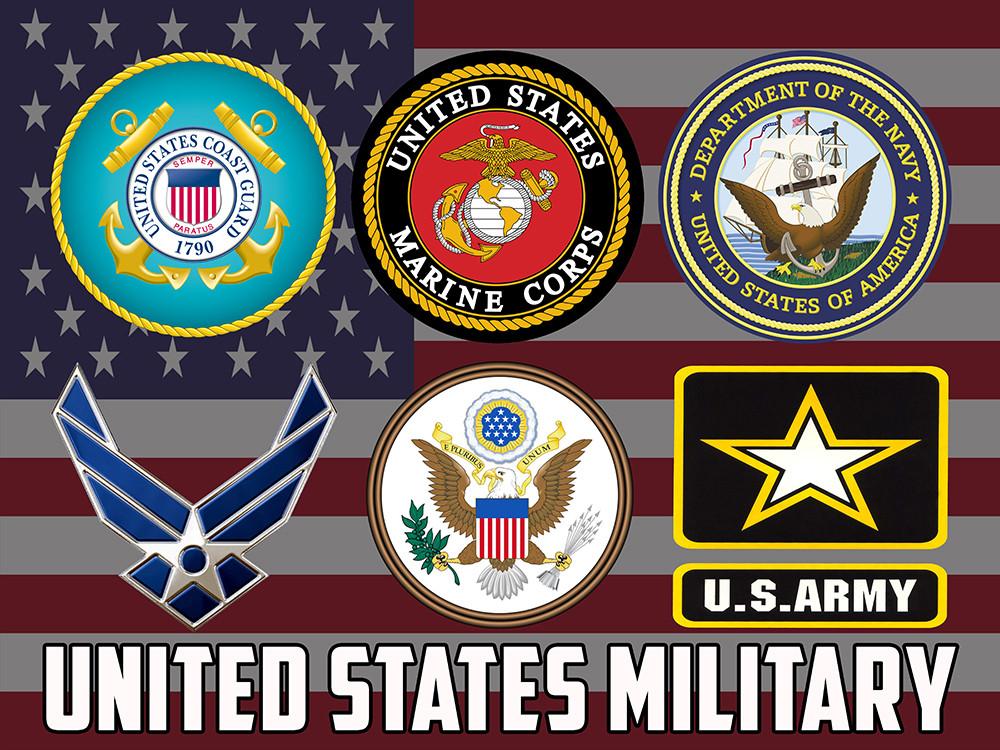
Willing to Serve...
KNOW YOUR MILITARY - Your military is an all-volunteer force that serves to protect our security and way of life. They are mothers and fathers, sons and daughters, friends and neighbors. TODAY'S MILITARY - Everything you need to know about entering the military – all in one place.
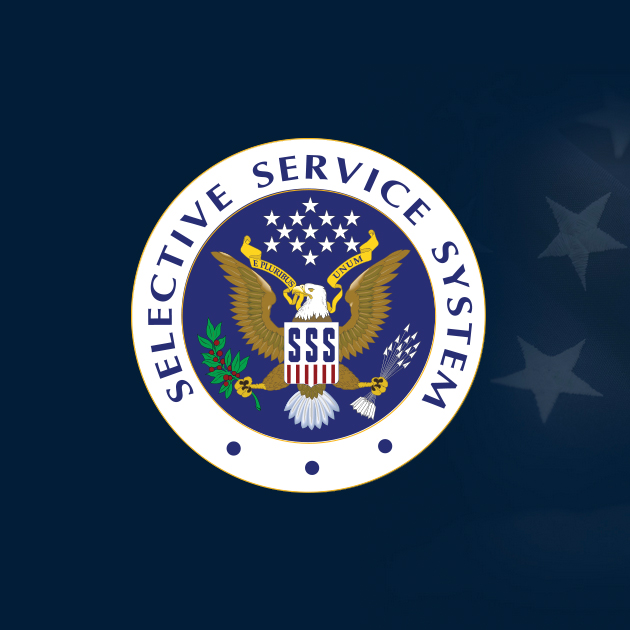
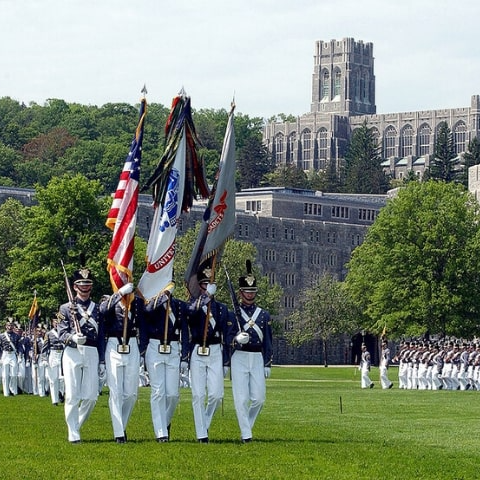
UNITED STATES SERVICE ACADEMIES
To compete for a spot at one of the service academies, students must be nominated by either one of their US Senators or their Representative in the House. These service academies are designed to put young people through extreme challenges to prepare them to serve the country, while also helping them reach their full potential. There is no monetary cost to attend a Service Academy, but cadets are required to sign a commitment to serve as a part of the United States Armed Forces upon graduation.
.
GENERAL ADMISSIONS REQUIREMENTS
(Check each individual Military Academy for specific details and deadlines)
1. Meet the Basic Requirements - US Citizen, Age (17-22 on July 1 of year of admissions), Unmarried, No legal obligations to support children.
2. Take the ACT or SAT - (Starting in JUNIOR Year) -These standardized tests help see how ready you are for the academic challenges of college-level work - especially in math, reading, and writing. Have official scores due by Jan 31st of Senior Year (Combination of best scores) (Avg SAT Scores of accepted Applicants - Math 667 / Reading 654)
3. Submit Your Application - (Application Opens FEB-JUNE of JUNIOR Year) - Be prepared with your information including - Personal information (e.g., home address, date of birth, etc.), Schools attended, Congressional District, Sport and extracurricular activities, Self-reported GPA and test scores (if available)
4. Obtain a Nomination (Apply for Nominations beginning APRIL of JUNIOR year thru NOVEMBER of SENIOR Year) - Most students apply for a nomination from: Both of their U.S. Senators (within their legislative district), Their U.S. Representative (within their legislative district), The Vice President of the United States. Note: Each nominating authority may nominate up to 15 candidates and they each have their own application process and deadline, so read and follow instructions closely. Applications often include an essay, resume, letters of recommendation, and possibly an interview. You can - and should - apply to more than one source to boost your chances. Locate your Congressional Representative or Senator.
5. Complete the CFA (Candidate Fitness Assessment) - (Anytime between FEB 15th Opening of JUNIOR Year and JAN 31st of SENIOR Year deadline) - which is a physical test of strength, agility, power, balance, speed, and endurance. It includes six timed components: Basketball throw, Cadence pull-ups or flexed-arm hang (women only), 40-yard shuttle run, Modified sit-ups, Push-ups, 1-mile run. Your CFA score is 10% of your USMA application.
6. Pass the Medical Exam - (Between JULY of JUNIOR YEAR thru APRIL 15th Deadline of SENIOR Year) - *Screening process may take 2-4 months so start early -To be offered admission, you must be medically qualified by the Department of Defense Medical Examination Review Board (DoDMERB). Note: You will be notified to schedule a DoDMERB exam after Admissions has reviewed your initial application (step 3) and confirmed your eligibility.
7. Complete your Candidate Checklist - (by JAN 31st Application DEADLINE of your SENIOR Year) - A completed checklist will include: Official SAT or ACT scores, Official school transcripts, Essays, personal statement and/or resume, Qualifying CFA scores, Letters of recommendation from three teachers, Updated records of sport and extracurricular activities, Nomination(s).
Offers of Admission will be sent anytime between NOV and MAY of SENIOR Year.
(Average CLASS PROFILE - 14,000 Applicants / 4,500 Nominated / 2,000 Qualify / 1,250 Admitted)
US MILITARY ACADEMY (WESTPOINT)
West Point - Summer Leaders Experience - To apply to, complete this step and the SLE checklist before April of your junior year. Applications for SLE open February 1st. The priority application deadline for SLE is Friday March 15th. They will accept applications until April 15th. SLE is competitive and not all who apply are offered to attend.
.
Summer Seminar kick-starts your Naval Academy application by giving you a taste of life at the Academy. For one week in June, you will experience first-class academic, athletic and professional training while building lifelong friendships with campers from all over the world.
.
Summer Seminar - Live the Academy Experience. Specially designed for high school juniors heading into their senior year, Summer Seminar is a recruiting program that allows participants to see themselves as a U.S. Air Force Academy cadet. This program is highly competitive, and there are a limited number of spaces available. While we encourage everyone to apply for Summer Seminar, attendance has no impact on application to the Academy.
.
AIM Summer Program - Lazy summers are for lazy people, not you. You’re driven to do something greater. The Academy Introduction Mission (AIM) is a one-week summer program where you’ll immerse yourself in Academy life. AIM is exclusively for students entering their senior year of high school and is regarded as the most realistic of the service academy summer orientation programs. AIM will test and inspire you. It will push you to your limits. You’ll rise early. You’ll study. You’ll compete. For six nonstop days, you’ll test your mind, body, and spirit in every way as you learn the meaning of college exceeded. Intense and rewarding, AIM will help you to discover whether the Academy experience is truly what you want from college and whether you have what it takes to succeed.
.
The United States Merchant Marine Academy is a federal service academy that educates and graduates leaders of exemplary character who are committed to serve the national security, marine transportation, and economic needs of the United States as licensed Merchant Marine Officers and commissioned officers in the Armed Forces. With 95 percent of the world's products transported over water, these leaders are vital to the effective operation of our merchant fleet for both commercial and military transport in peace and war. Academy graduates abide by the motto: “Acta Non Verba," or "Deeds Not Words," and are leaders that exemplify the concept of service-above-self.
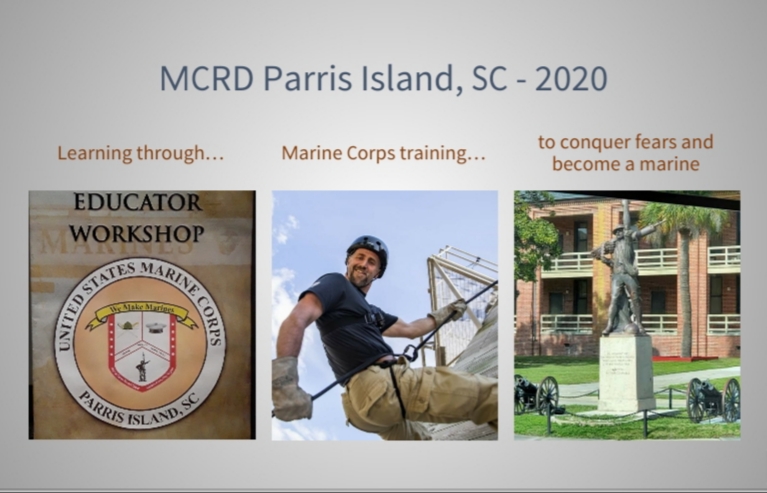
WORRIED ABOUT WHAT TO EXPECT IN BOOT CAMP?
Want to know more about what the Military has to offer you in the way of training and/or benefits?
MR SNYDER spent 1 week with the Marines at PARRIS ISLAND, SC in March 2020
and brought back information, pictures and videos - (see the links below)
MARINE CORPS RECRUIT DEPOT PARRIS ISLAND, SC - EDUCATOR WORKSHOP
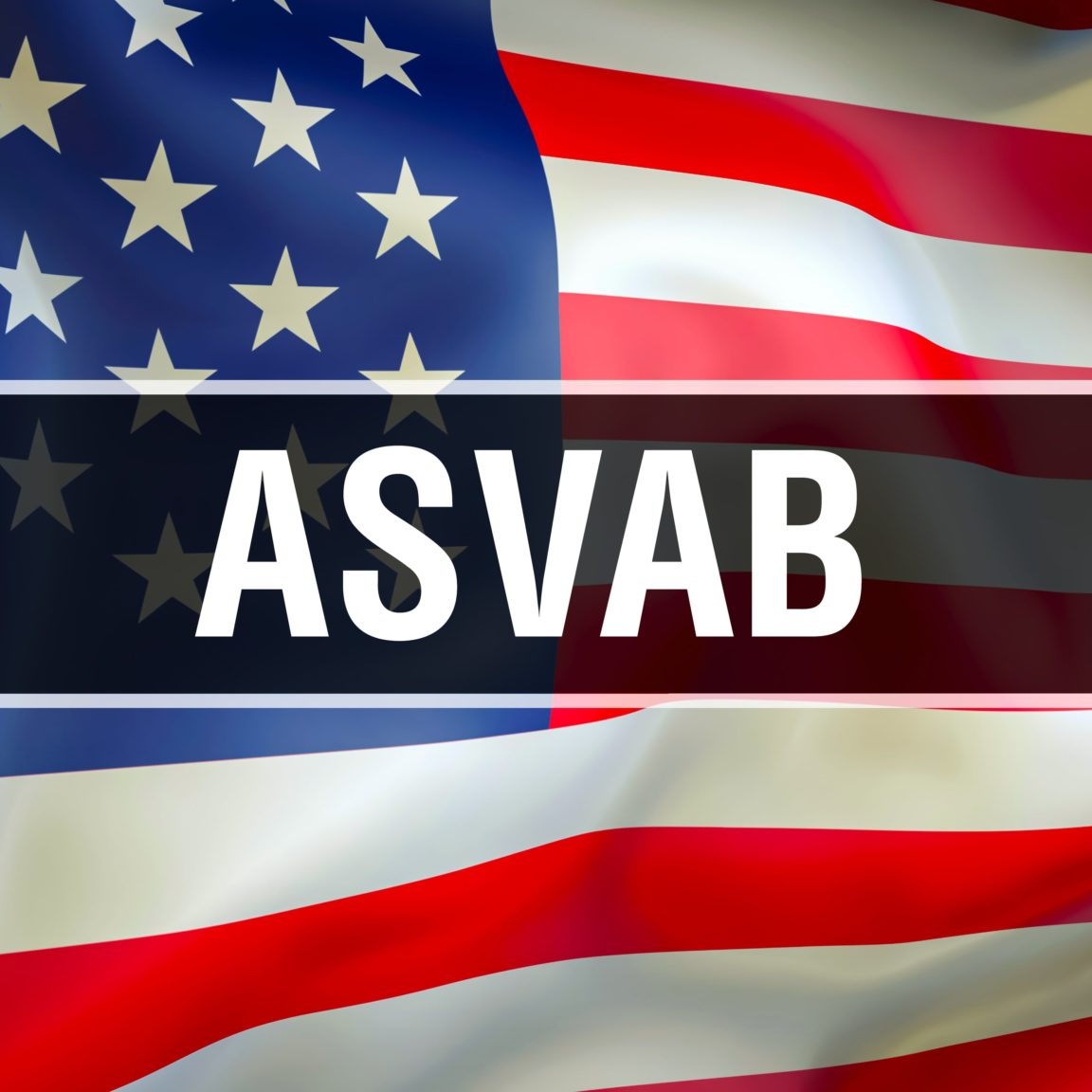
ASVAB - The Armed Services Vocational Aptitude Battery (ASVAB) is a multiple-aptitude battery that measures developed abilities and helps predict future academic and occupational success in the military. It is administered annually to more than one million military applicants, high school, and post-secondary students.
It is a test that was originally established in 1968 to measure and predict the success of an applicant in various academic and occupational pursuits in the military. High school and post-secondary students and adults take the test more than one million times each year. If you’re interested in joining the military, or if you already have and would like to take a sample test, simply navigate through the ten ASVAB practice test sections and take whichever tests you’d like as often as you’d like.
.
About This Site
This site is designed to provide you with everything you need to practice for the ASVAB test. We have ASVAB practice sections broken up just as you would see them on the real test. Every resource on this site, including the ASVAB practice tests, is completely free. Each practice ASVAB test section contains enough questions that the test can be retaken and will be different each time, so you can practice the test as many times as you need to.
This ASVAB practice tests follow the same format and structure as the computerized version of the real test, which is known as the CAT-ASVAB. The tests have the same number of questions, the same types of questions and are timed just like the actual test.
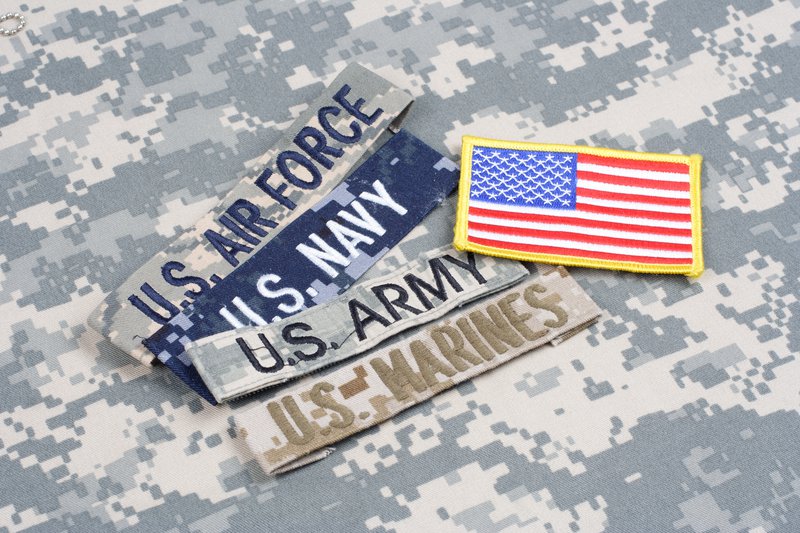
OUR FORCES
US ARMY - The largest service in the US Military, the Army provides the ground forces that protect the United States. - Explore Army Careers. PRIMARY MISSION - Land-based military operations; largest and oldest branch. KEY FOCUS AREAS - Combat operations, logistics, engineering, communications, medical support, intelligence. CAREER EXAMPLES - Engineering: civil, mechanical, combat engineers. Technology: cyber operations, IT specialists. Heath: medics, nurses, physical therapists. Business: supply chain, finance, HR. Best for students who want lots of options and career variety.
US MARINE CORPS - A component of the Department of Navy, the Marine Corps maintains amphibious and ground units for contingency and combat operations. - Explore Marine Careers. PRIMARY MISSION - Rapid-response, amphibious assault force; often first on the ground. KEY FOCUS AREAS - Combat readiness, aviation, logistics, intelligence, engineering. CAREER EXAMPLES - Tactical: infantry, aviation support. Engineering: combat engineers, technicians. Human Services: counselors, law enforcement. Media: combat photographers, videographers. Best for students who want a challenge and physical/mental discipline.
Military Occupational Specialty (MOS)
US NAVY - On, above or below the water, the Navy is America’s forward-deployed force and is a major deterrent to aggression around the world. - Explore Navy Careers. PRIMARY MISSION - Sea-based operations; global force for power projection and maritime security. KEY FOCUS AREAS - Naval aviation, submarines, cybersecurity, nuclear propulsion, logistics. CAREER EXAMPLES - STEM: nuclear engineers, meteorologists, sonar technicians. Medical: corpsmen, dentists, surgeons. Communications: public affairs, interpreters. Trades: electricians, machinists. Best for students who are interested in tech, travel or the sea.
US AIR FORCE - The Air force provides a rapid, flexible and lethal air and space capability that can deliver forces anywhere in the world within hours. - Explore Air Force Careers. PRIMARY MISSION - Air and space superiority, cyber defense, intelligence. KEY FOCUS AREAS - Aircraft operations, space operations, cybersecurity, logistics, intelligence. CAREER EXAMPLES - STEM: space systems operators, satellite techs. IT & Cyber: network specialists, security analysts. Health: biomedical, mental health. Communication: broadcast specialists. Best for students who love tech, aviation, or space.
US SPACE FORCE - The U.S. Space Force (USSF) is the newest branch of the Armed Forces, established on December 20, 2019. - Explore Space Force Careers. PRIMARY MISSION - Protect U.S. and allied interests in space; cyber and satellite operations. KEY FOCUS AREAS - Space domain awareness, satellite communications, cybersecurity, innovation. CAREER EXAMPLES - Aerospace: satellite and space systems engineers. Cybersecurity: network warfare, digital defense. Intelligence: data analysis, orbital surveillance. Best for students who are drawn to cybersecurity, satellites, and innovation.
US COAST GUARD - The Coast Guard provides law and maritime safety enforcement, marine and environmental protection and military naval support. Part of the Homeland Security during peacetime, the Coast Guard operates under the Navy during times of war. - Explore Coast Guard Careers. PRIMARY MISSION - Maritime law enforcement, search and rescue, environmental protection. KEY FOCUS AREAS - Navigation, emergency response, homeland security, marine science. CAREER EXAMPLES - Environmental: marine science technicians, pollution responders. Rescue &Ops: helicopter rescue swimmers, boat operators. Law enforcement: maritime security, drug interdiction. Trades: mechanics, welders, electricians. Best for students who care about rescue, law enforcement, and environment.
US NATIONAL GUARD (Army & Air) - Comprised of the Army National Guard and Air National Guard, the National Guard is a versatile force, supporting combat missions, domestic emergencies, humanitarian efforts, homeland security operations and more. On Dec. 13th, 1636, the first militia regiments in North America were organized in Massachusetts to better defend the colony. The oldest Army National Guard units are the direct descendants of these original militia regiments and share the distinction of being the oldest units in the U.S. military. - Explore National Guard Careers in Michigan. PRIMARY MISSION - Dual-role service: federal and state missions (disaster response, homeland security). KEY FOCUS AREAS - Same as Army/Air Force but with a strong local focus. CAREER EXAMPLES - Community-based: disaster relief, wildfire response. Technical: aircraft maintenance, construction. Support: medical, logistics, communications. Best for students who want to serve locally while pursuing civilian goals.
.
COMBATANT COMMANDS - The Defense Department has 10 combatant commands, each with a geographic or functional mission that provides command and control of military forces in peace and war.
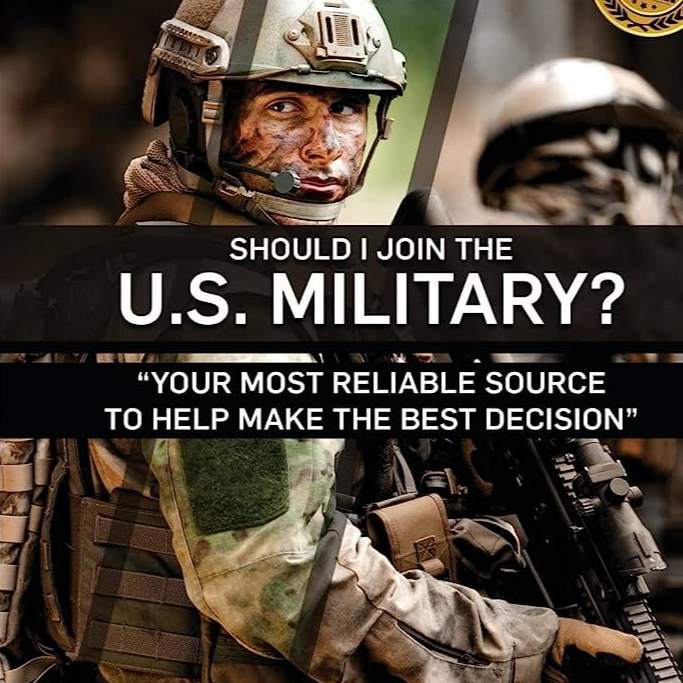
MILITARY 101
There are 2 distinct paths to joining the Military:
1 - ENLISTING - Enlisted roles require a high school education. While enlisted careers do include infantry roles, most jobs involve hands-on training for mechanical, transportation, human services or office fields that transfer well to the civilian world. BOOT CAMP - Basic Training, often known as boot camp, prepares recruits for all elements of service: physical, mental and emotional. It gives service members the basic tools necessary with the goal of preparing new recruits for successful service.
2 - COMMISSIONING AS AN OFFICER - Officers are the managers of the Military, acting in roles that include planning, directing operations and making critical decisions. Positions require a college degree or equivalent. Individuals can become an officer by earning a commission through enlisted service, attending one of he highly competitive service academies or participating in the Reserve Officer's Training Corps (ROTC) program. SERVICE ACADEMIES - Service academies offer a world-class education with fully funded tuition that includes room and board. Graduates receive a Bachelor of Science degree and are commissioned in their respective Service branches. ROTC PROGRAMS - ROTC Programs provide officer training for students during college in exchange for a paid college education. In return, students commit to serve either on Active Duty or part-time in the Guard or Reserve for a set period of time after graduation, usually five years.
.
ACTIVE DUTY - Full-time Military service. Active Duty is a full-time job with set work hours (on duty)and time off (off duty). Being on duty is similar to any other workday, working in an occupational specialty. Off duty is the time for active-duty service members to pursue their own interests like hobbies, their education or spending time with friends and family.
.
RESERVE - Part-time Military service. Most services also have a Reserve force made up of service members who typically balance school or full-time civilian careers while serving in the Military. The Reserve components combine an individual's civilian experience with military skills. Reserve members can be called to Active Duty to support mission needs. (Minimum - One weekend a month Military Drill and Two-weeks a year Military training).
.
NATIONAL GUARD - Part-time Military Service. The Army National Guard and Air National Guard are community-based, and report to the governor of their respective state unless called to protect US domestic interests in times of conflict or natural disaster. They may also be deployed internationally alongside active-duty service members when necessary. Members of the National Guard hold civilian jobs and can attend school while conducting their military training part-time. (Minimum - One weekend a month Military Drill and Two-weeks a year Military training).
KEY INSIGHTS
Every branch offers college credit, technical certification, leadership development and a pathway to both military and civilian careers. Each branch has different enlistment requirements (physical requirements and ASVAB scores). Key points to consider - lifestyle, physical and mental demands, career-development, long-term commitment.
Special Operations Personality Test - Posted by Warrior Poet Society on Apr 14th 2025, by John Lovell
